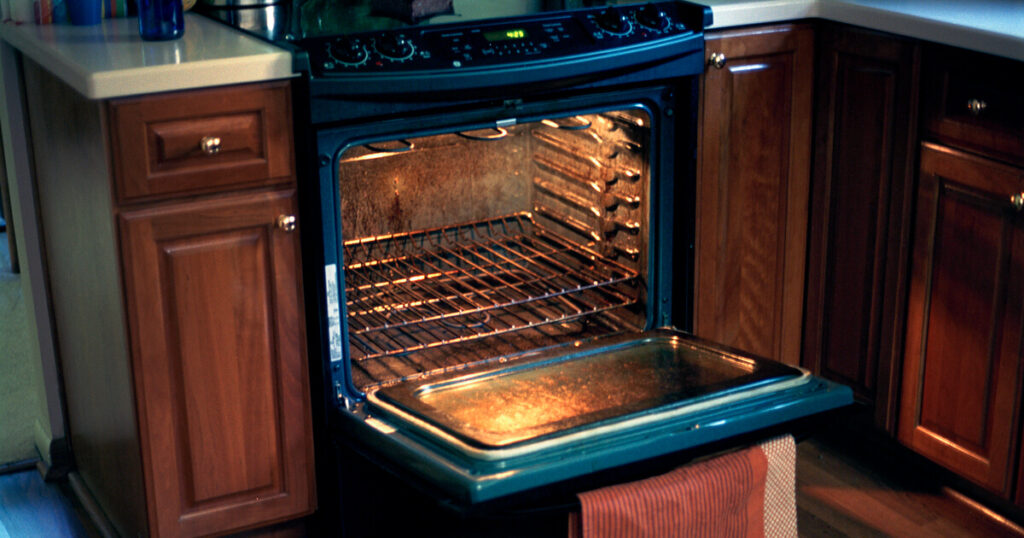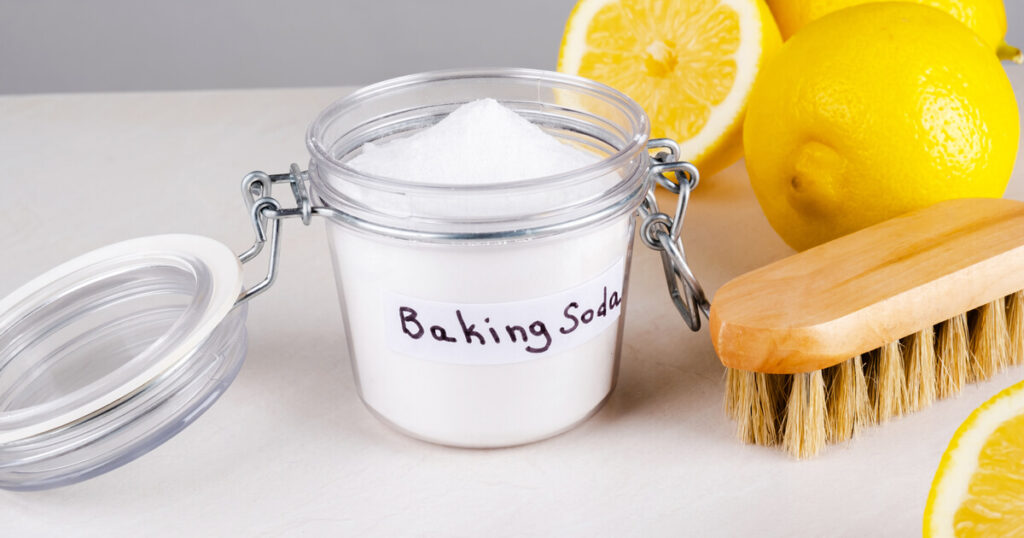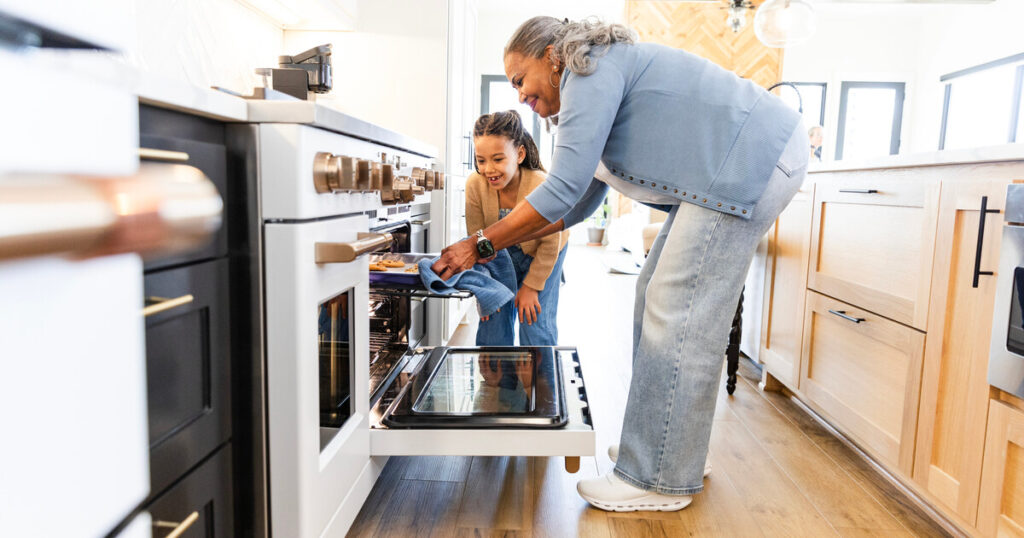
Do you have a self-cleaning oven but hesitate to use it? You’re not alone—many people worry about the feature’s extreme heat and potential risks. But it’s important to know how to clean a self-cleaning oven. The key is balance. While the self-cleaning cycle helps break down baked-on residue, regular manual cleaning is still essential to prevent buildup and keep your oven performing at its best. Here’s how to keep your oven spotless without over-relying on the self-cleaning function.
How to Clean A Self-Cleaning Oven with Routine Maintenance
Regular maintenance prevents stubborn buildup and makes deep cleaning a breeze. Here’s how to stay ahead of the mess:
- After Each Use: Wipe down the interior with a damp cloth to remove spills before they harden.
- Monthly Touch-Up: Use warm, soapy water to clean interior surfaces, focusing on grease spots and stains.
With routine cleaning, you’ll minimize the need for deep cleaning and reduce reliance on the high-heat self-cleaning cycle. But when grime inevitably builds up, a thorough deep cleaning is the best way to restore your oven’s shine.
How to Deep Clean a Self-Cleaning Oven Manually
Step 1: Prepare Your Oven
Before you start cleaning, make sure your oven is turned off and completely cool to avoid burns and ensure cleaning solutions work effectively.
Next, remove all loose items, including oven racks, broiler pans, and liners. These should be cleaned separately for the best results:
- Soak in Warm, Soapy Water: Let the racks and pans sit for at least 30 minutes to loosen baked-on grime.
- Scrub & Rinse: Use a non-abrasive sponge to remove any remaining residue, then dry thoroughly.
With your oven empty and ready, you’re set to tackle deep cleaning.

Step 2: Choose Your Oven Cleaner
Deep clean your oven with one or more of the following everyday household ingredients:
- Baking Soda Paste: Mix ½ cup of baking soda with 3 tablespoons of water to form a spreadable paste. Apply it generously to grease-stained areas and let it sit for at least 20 minutes—or overnight for heavy buildup.
- Baking Soda & Vinegar: Enhance cleaning power by spraying vinegar over the baking soda paste. The fizzing reaction helps dissolve stubborn grime.
- Ammonia Method (Optional): For tough, baked-on residue, place ½ cup of ammonia in a shallow dish inside a cold oven overnight. The fumes will soften hardened grease, making scrubbing easier.
Let your cleaner work for a while before moving on to scrubbing for the best results.
Step 3: Scrub & Rinse for a Spotless Finish
With the grime loosened, it’s time for the final step:
- Scrub Gently: Using a soft sponge or microfiber cloth, wipe down the oven’s interior. Skip the steel wool—harsh scouring pads can scratch the surface.
- Rinse Well: Go over the entire interior with a damp cloth or sponge to remove any remaining cleaning solution. Any residue left behind can lead to smoke or unpleasant odors during cooking.
- Clean the Oven Glass: Wipe down the oven door with glass cleaner or white vinegar to eliminate lingering grease and streaks.
Once your oven is completely dry, it’s ready for use. But if it’s been a while since your last deep clean, and the stains and residue are stubborn, it might be time to take advantage of your oven’s built-in cleaning power: the self-cleaning cycle.
When To Use the Self-Cleaning Feature
The self-cleaning cycle can be intimidating, but when used correctly, it’s an effective way to remove stubborn grime. Always refer to your oven manufacturer’s guidelines for safety and best results. Because the extreme heat puts extra strain on your oven’s components, it’s best to use this feature sparingly. To avoid unnecessary wear and tear, follow these guidelines:
- Limit Usage: Run the self-cleaning cycle only once or twice a year to prevent excessive stress on the oven.
- Prep Before Cleaning: Remove oven racks (if your manufacturer recommends it) and clear out large food debris to minimize smoke.
- Post-Cleaning Touch-Up: Once the cycle is complete and the oven has cooled, wipe away any remaining ash with a damp cloth for a spotless finish.
Maintaining a balance between manual cleaning, deep cleaning, and occasional self-cleaning will keep your hard-working oven looking its best for years to come.

FAQs About How To Clean A Self-Cleaning Oven
Can I leave the house while the oven is self-cleaning?
No, it’s not recommended. The self-cleaning cycle reaches extremely high temperatures and can pose a fire risk if excess grease or debris is present. Stay home so that you can monitor smoke or unusual odors and turn off your oven if necessary.
Is it safe to be indoors while the oven is self-cleaning?
Yes, but ensure proper ventilation as burning food residue may produce smoke or fumes. Open windows, run the vent, and keep pets and children away. If strong odors persist, turn off the oven and let it cool.
How long does it take for a self-cleaning oven to clean?
Most cycles last 2 to 5 hours, plus 30–90 minutes for cooling. Check your oven manual for exact timing.
Is it safe to manually clean a self-cleaning oven?
Yes, the self-cleaning option on an oven works best when the oven is also regularly manually cleaned.
Can I use Easy Off on a self-cleaning oven?
You are free to use Easy Off when you are manually cleaning if your manufacturer allows it. Such cleaners should never be used in the self-cleaning mode. Harsh chemicals can damage the oven’s enamel over time, so gentler cleansers are recommended.
Is it true that some ovens offer a steam cleaning option?
Yes! Read our guide on how to steam clean an oven.
Your oven is your kitchen’s workhorse, and cleaning it is an essential part of keeping it useful for years to come.
At Landers, we know the value of a hard-working oven and have faithfully served the Baltimore area for decades. If you’re in the area, Landers is proud to offer expert appliance repair and replacements in Rockville and Baltimore.

